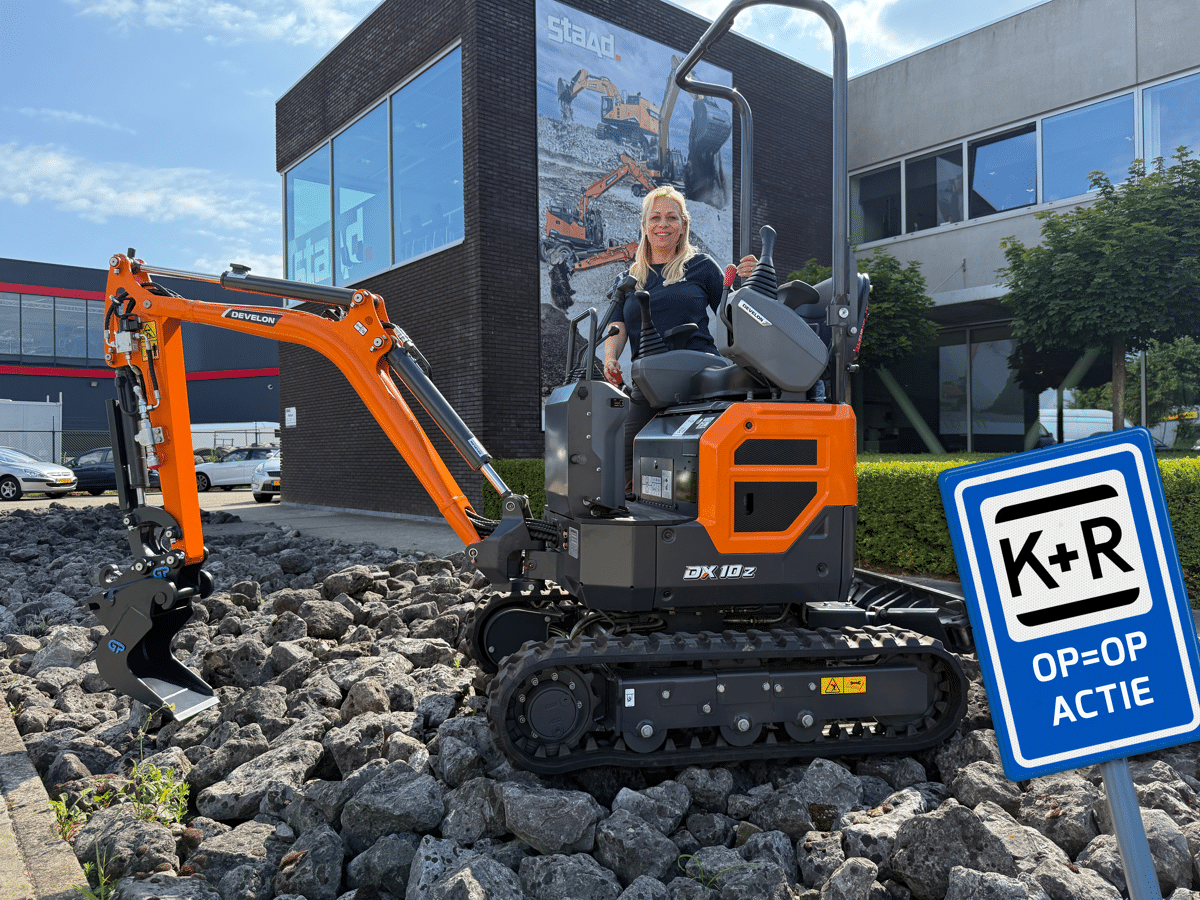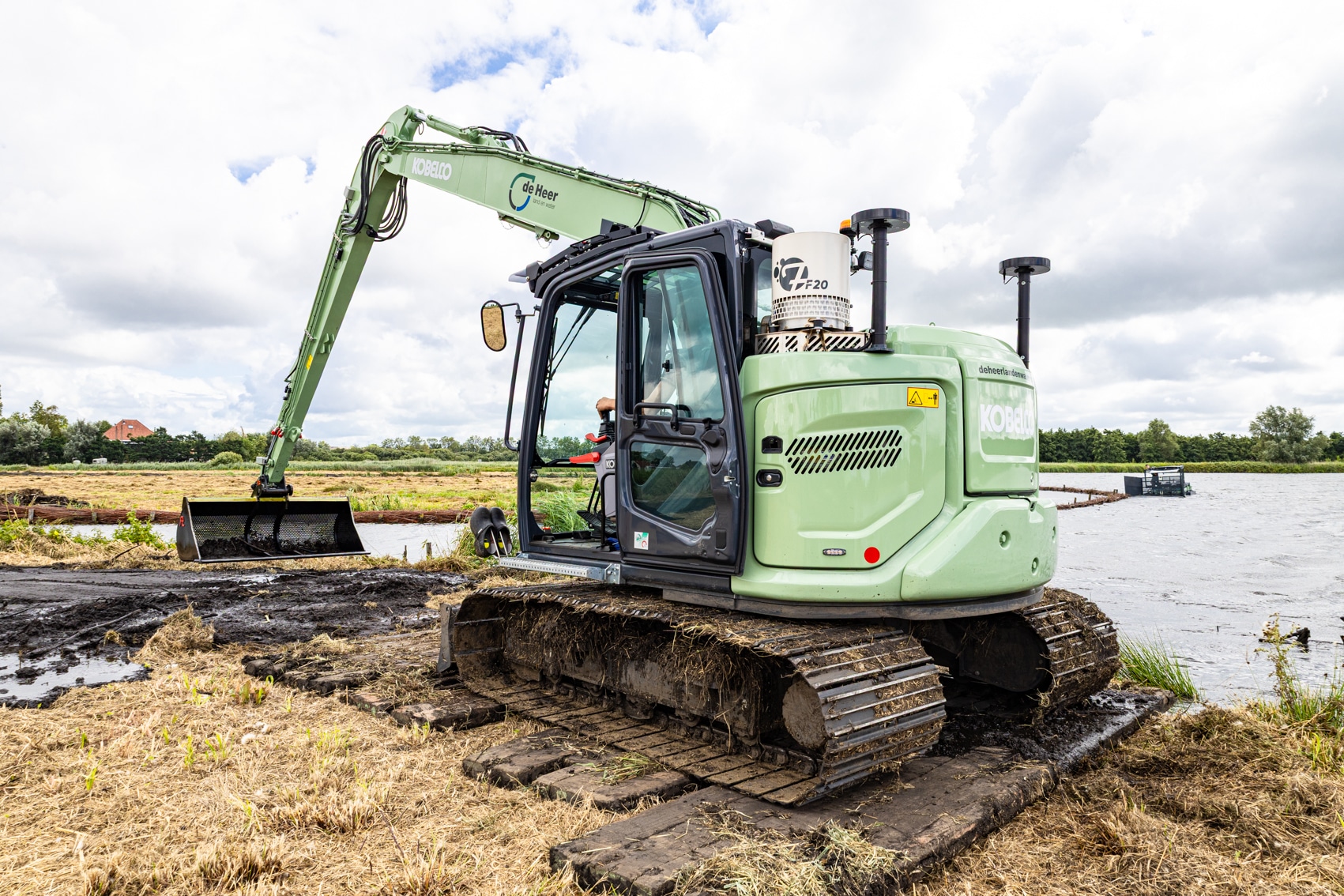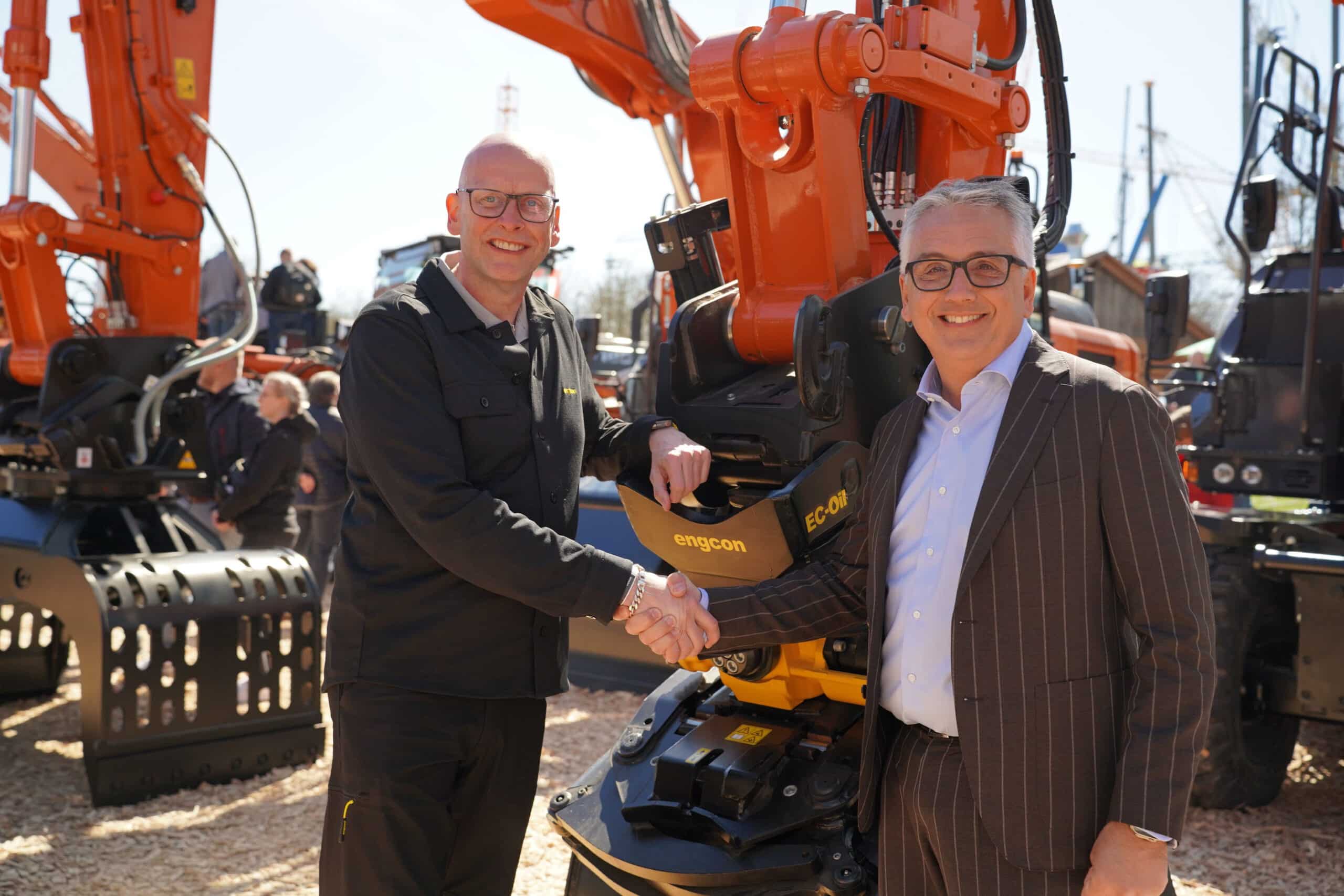
Bus lane Dichterswijk in Utrecht calls for decisive action
Multidisciplinary project
The city of Utrecht is growing and there is more and more traffic. To keep Utrecht accessible in a healthy and attractive way, the municipality wants to make public transport an attractive alternative to the car. Bus lane Dichterswijk is the last link in the large High Quality Public Transport (HOV) network in Utrecht with free bus lanes.
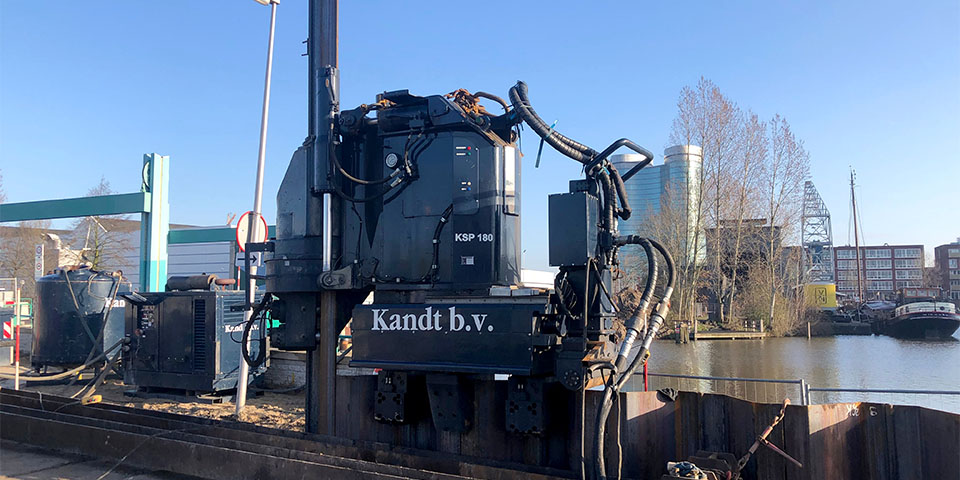
The installation of sheet piling (Silent Piling) by Kandt. (Image: Kandt B.V.)
The current infrastructure on site needs to be adapted so that a safe traffic situation is realized for all traffic participants with cyclists and pedestrians in particular. Bus lane Dichterswijk is being realized by 'Combinatie Dichterswijk', consisting of KWS Infra and Van Hattum en Blankevoort, both part of VolkerWessels, together with a number of subcontractors, on behalf of the Municipality of Utrecht. One of these is Kandt BV, a company with more than forty years of experience in foundation works.
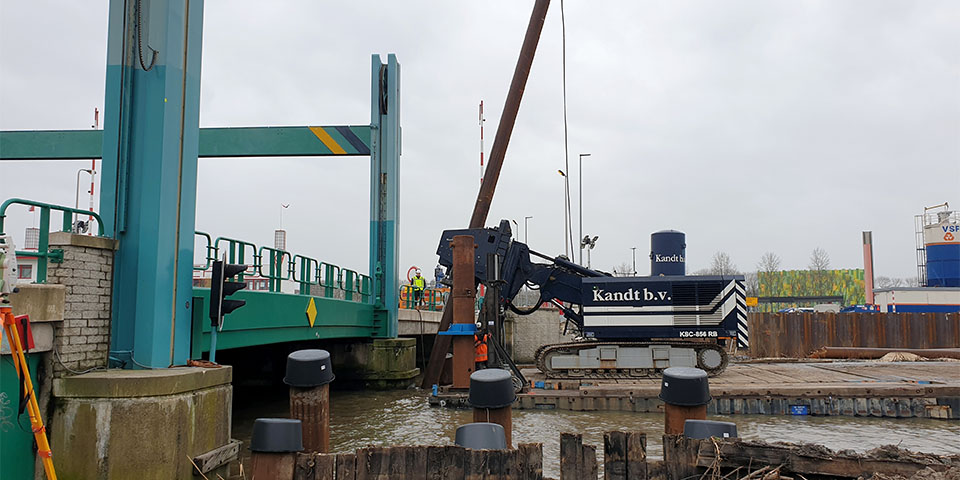
Drilling of LeKa piles by Kandt from the water. (Image: Kandt B.V.)
Tight planning
Joshua van der Knaap, project manager at Kandt Aannemings- en Funderingsbedrijf BV talks about the work Kandt carried out there. "In the first phase, we performed preliminary work for the realization of the Expedition Bridge (of the Jaarbeurs) which, together with the Nelson Mandela Bridge, will run over the new bicycle underpass to be realized. For the expansion of the Nelson Mandela Bridge, we drilled LeKa piles both from land and from water. The complexity here was mainly in the fact that the piles for the center piers had to be drilled from the water, under bracing and close to existing center piers." Van der Knaap explains that it was very important to plan everything efficiently within the set frameworks from the main contractor, because an out-of-service period had to take place following Phase 1. "That means that we started counting backwards from the deadline (the out-of-service period) with our expected productions to determine the start of our work. Following the drilling of the piles, Kandt also erected the steel sheet piles both low-vibration and vibration-free for the bicycle underpass.

Project Bus Lane Dichterswijk: A bicycle underpass under the Nelson Mandela Bridge and the Expedition Bridge of the Jaarbeurs will be constructed.
(Image: Combination HOV Dichterswijk)
Silent Piling
"From a structural point of view, the sheet piles were not allowed to be set until after the piles had been drilled," Van der Knaap continued. "Some of the sheet piling was pressed in by Silent Piling. This had to do with preserving an old quay wall at Villa Jongerius and because in the design phase it turned out that a pipeline ran parallel to the route. We were bound to a limited working space: for example, we were working behind the existing quay wall and so you must not put too much load on the ground level."

Final situation Project Bus Lane Dichterswijk: there will be an avenue of trees with a bus lane in the middle with a lane for cars on both sides, a two-way bike path and a footpath. (Image: HOV Dichterswijk combination)
From land and water
Because of the busy road over the Nelson Mandela Bridge, which must remain accessible to motorists during the work, the project site has been divided into two parts. Work will be done from land and from the water. "Because you are dealing with binding standards, we adapt our working methods accordingly. For example, we are excellent with our hydraulic sheet pile racks, and during drilling we have taken into account peak times when passing under the bridge. In addition, the passage is almost as wide as the width the pontoon needed to guarantee the desired stability. But through careful preparation, calculations and coordination with the general contractor, it all worked out with the inches of working space we had on the pontoon. And then there's the out-of-service period I mentioned earlier. That requires flexibility and carrying capacity from our people in addition to good coordination with the main contractor and other subcontractors, which is why I am very proud of our team." Van der Knaap also mentions the open communication and short lines of communication between "inside" and "outside. He concludes, "Partly because of this, we are perfectly capable of working on this kind of large complex project with different disciplines at the same time."
